May: The Coastal Marshes of Washington State
By Kelsey on May 15, 2015
We have recently returned from our fourth shoot, which started on May 4th with us needing to buy waders. That’s right, waders. As in we were going to be in an area with water and mud instead of dust and rocks. This trip brought us to the coastal marshes of Washington state to follow our first micropaleontologist, Dr. Andrea Hawkes, Assistant Professor of Geology at the University of North Carolina Wilmington into the field.
Dr. Hawkes has some amazing energy about her and managed to recruit the three other women in their group to participate in our project: Dr. Tina Durá, post-doc at Rutgers University; Isabelle Hong, PhD student at Rutgers University; and her own graduate student, Christine Johnson at UNCW. We are so glad she did as they each provided some insightful interviews and some portraits I am feeling confident about (more on that once the film is developed!).
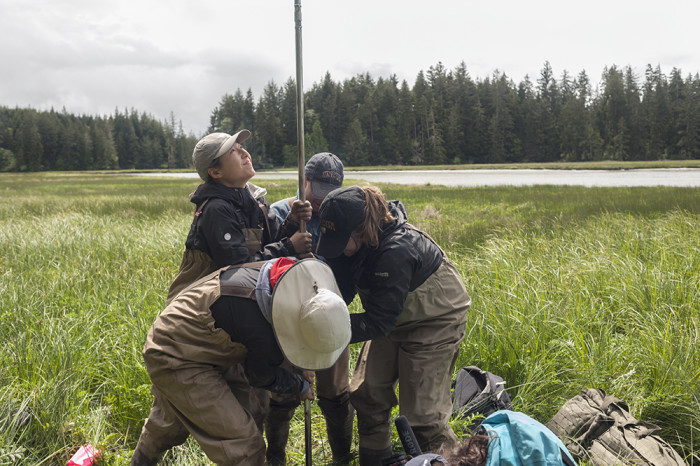
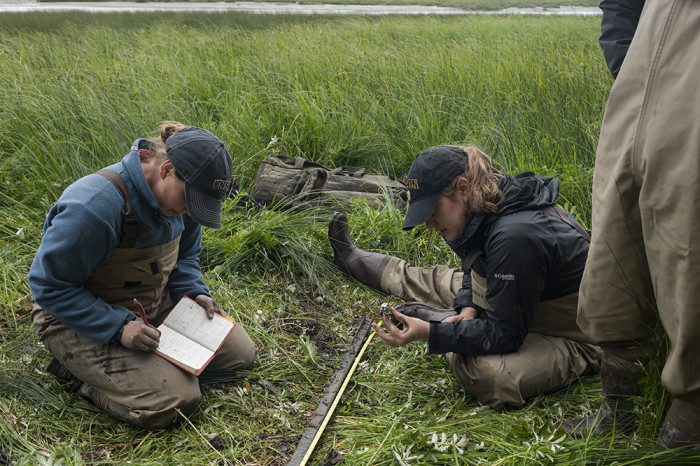
- Dr. Andrea Hawkes (left) records the soil in the core sample as her student, Christine Johnston, identifies the contents. © 2015 Kelsey Vance
The Pacific Northwest is an incredible place and the coastal areas we were in were absolutely beautiful. The marshes are richly green with rivers meandering through them and tall pines framing them. It was stunning. We were all set to spend two days with the Cascadia 2015 research group (you can follow their #cascadia2015 on twitter) when a frightening forecast of day-long thunderstorms threatened one of our precious shooting days. Thankfully, the weather gods were kind to us as we experienced just a few minutes of rain on Tuesday and were graced with sunshine for the rest of the trip. This afforded us plenty of time to film the scientists in action digging a trench in the muddy marsh wall and taking many core samples from several meters below its grassy surface, as well as prime conditions for conducting interviews and making some bearded portraits. It even allowed us to take a morning drive down the coast to see some of their other potential sites and check out Long Beach. Which was perfect timing as we didn’t want to interfere with the sample collecting the scientists had planned while tide was out that morning.
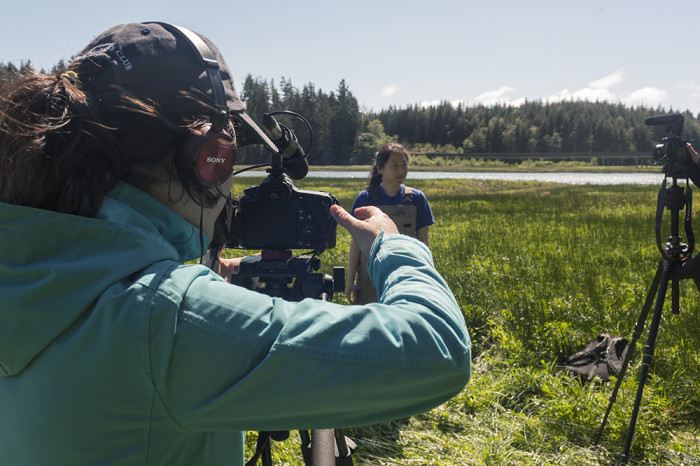

As I previously mentioned, we needed to be wearing waders. This is some dirty work, the mud of the marshes is sticky and requires a more strategic form of walking. You can’t be timid going into it as hesitation will very likely result in you getting stuck. Being light footed and sliding a bit with each step certainly helps. As a visitor to this field site, I found walking through the mud to be pretty fun, but can also see how it could get old fast. Of this group of scientists, they seem completely undeterred by the force of the mud. Then again, being surrounded by a beautiful landscape while doing what you love most, with a bunch of great people, are all very good motivators.
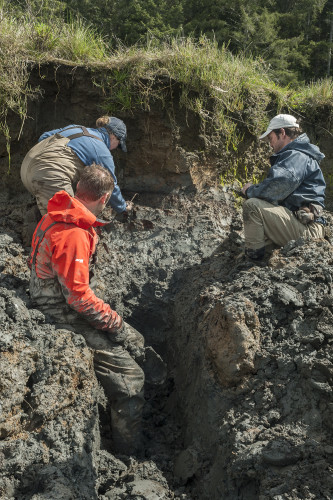
To provide some insight regarding their research, here is my layman’s summary of their fascinating work. Collectively, they are looking at the soil layers of the marshes for evidence of tsunamis that may have affected the Pacific coast throughout the earth’s more recent history (within the past 10,000 years). They do this by taking core samples and within the samples look for different layers of soil and organic matter that indicate some kind of disturbance in the layering, i.e. a tsunami. Ultimately, from this research they hope to have a more comprehensive understanding of the Pacific coast’s history to better prepare the populations currently living there for a potential earthquake and/or tsunami. Pretty amazing.
This was the largest group we have joined in the field and also the first to be male and female. They were a great group with a wonderful dynamic and multiple generations of advisors and advisees working together. At the conclusion of our trip, we were told that our presence had sparked some stimulating and productive conversations regarding gender equality within the geosciences. They also informed us how pleased they were that we didn’t interfere with the research and that we were so independent. Two things we’re always happy to hear.
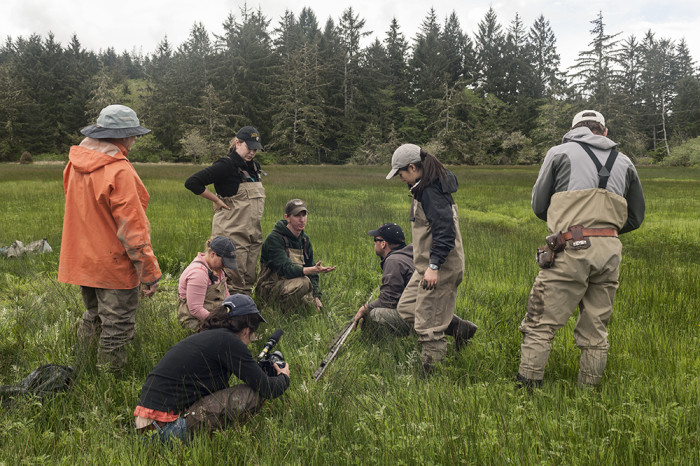
On another note, this was also our first shoot with a different Director of Photography, Eliana Alvarez, a very talented documentary filmmaker and former teacher of Lexi’s. We had a lot of fun and look forward to working with her again in the future. Check out some of her personal projects by visiting her website elianaalvarez.com. Welcome aboard, Eliana!
We have the month of June off but will be back at in July as we travel to the University Exeter to film Dr. Claire Belcher and her fire lab as well as visit the Mary Annings research site.